Tribe Eragrostideae Scientific name Eleusine coracana Rank Species | Subfamily Chloridoideae Genus Eleusine Higher classification Eleusine | |
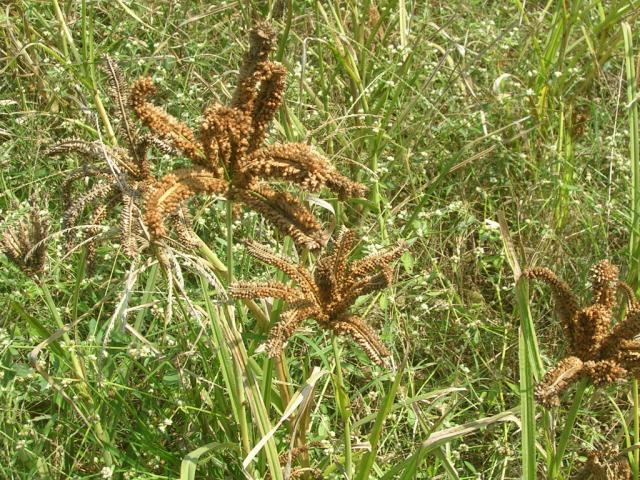 | ||
Similar Pearl millet, Sorghum, Black gram, Broom‑corn, Horse gram | ||
Eleusine coracana, or finger millet, is an annual herbaceous plant widely grown as a cereal crop in the arid and semiarid areas in Africa and Asia. It is a tetraploid and self-pollinating species probably evolved from its wild relative Eleusine africana.
Contents
- Octonary ingredients of eleusine coracana formulations pankaj oudhia s medicinal plant database
- History
- Growing regions
- Climate requirements
- Cropping systems
- Weeds
- Diseases and pests
- Propagation and sowing
- Harvest
- Storage
- Milling
- Malting
- Nutrition
- Growing finger millet to improve nutrition
- In India
- Western and Konkan Region
- In South India
- Central Northern India
- In Nepal
- In Sri Lanka
- In Vietnam
- As Health Food
- Holy Deity food
- As Beverage
- Common names for finger millet
- References

Finger millet is native to the Ethiopian and Ugandan highlands. Interesting crop characteristics of finger millet are the ability to withstand cultivation at altitudes over 2000 meters above sea level, its favorable micronutrient contents (high iron and methionine content in particular), its high drought tolerance and the very long storage time of the grains.
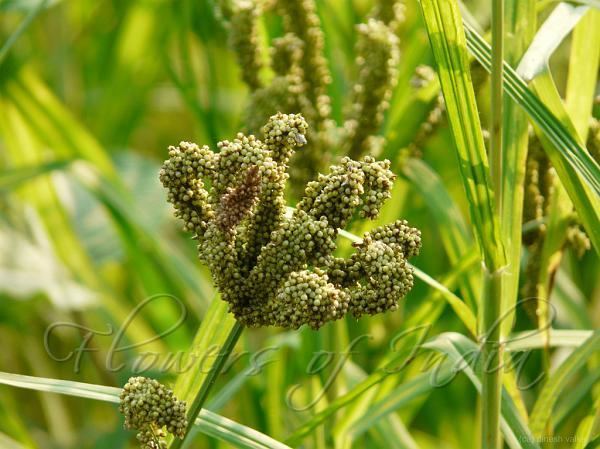
Octonary ingredients of eleusine coracana formulations pankaj oudhia s medicinal plant database
History

Finger millet originated in East Africa (Ethiopian and Ugandan highlands) and came to India (Hallur region of[Karnataka]) around 2000 BCE. It has been found in an Indian archaeological site dated to 1800 BCE (later iron age).
Growing regions
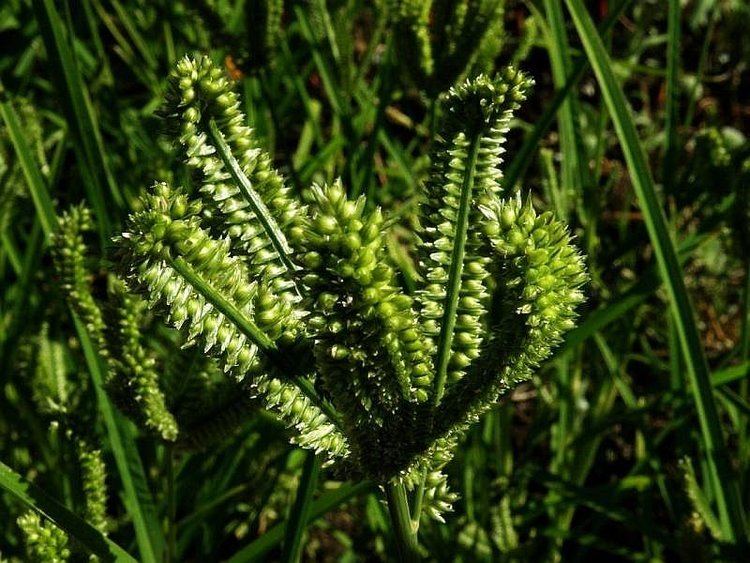
Main cultivation areas are Eastern and Southern African countries (Uganda, Kenya, Zaire, Zimbabwe, Zambia, Sudan, Tanzania, Malawi and Mozambique) and Southern Asia (mainly India and Nepal).
Climate requirements
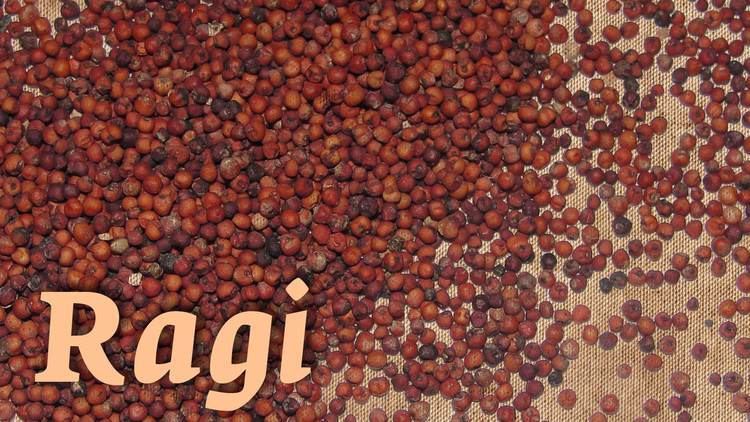
Finger millet is a short-day plant with a growing optimum at 12 h daylenght for most varieties. Its main growing area ranges from 20° N to 20° S, meaning mainly the semiarid to arid tropics. Nevertheless, finger millet is found to be grown at 30° N in the Himalaya region (India and Nepal). It is generally considered as a drought tolerant crop. But compared with other millets, such as pearl millet and sorghum it preferes moderate rainfall (≥500 mm annually). The majority of worldwide finger millet farmers grow it rainfed, although yields often can be significantly improved when irrigation is applied. In India, finger millet is a typical rabi (= dry season) crop. Heat tolerance of finger millet is high. For Ugandan finger millet varieties for instance, the optimal average growth temperature ranges at about 27 °C, while the minimal temperatures shouldn't be lower than 18 °C. Relatively to other millet species (pearl millet and sorghum) finger millet has a higher tolerance to cool temperatures. It is grown from about 500 meters above sea level up to about 2400 meters above sea level (e.g. in Himalaya region). By that, it can be cultivated on higher elevations than most tropical crops. Finger millet can grow on various soils, including highly weathered tropical lateritic soils. Furthermore, it can tolerate soil salinity up to a certain extent. Its ability to bear waterlogging is limited, therefore good drainage of the soils and moderate water holding capacity are optimal. Finger millet can tolerate moderately acidic soils (pH 5) but also moderately alkaline soils (pH 8.2).
Cropping systems
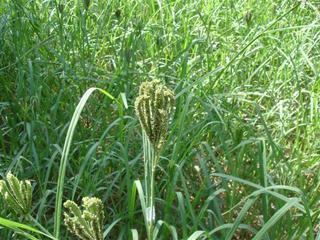
Finger millet monocrops grown under rainfed conditions are most common in drier areas of Eastern Africa. In addition, intercropping with legumes, such as cowpea or pigeon pea, are also quite common in East Africa. Tropical Central Africa supports scattered regions of finger millet intercropping mostly with legumes, but also with cassava, plantain and vegetables.
Most common Finger millet intercropping systems in South India are as follows:
Weeds
Weeds are the major biotic stresses for finger millet cultivation. Its seeds are very small, which leads to a relatively slow development in early growing stages. This makes finger millet a weak competitor for light, water and nutrients compared with weeds. In East and Southern Africa, the closely related species Eleusine indica (common name Indian goose grass) is a severe weed competitor of finger millet. Especially in early growing stages of the crop and the weed and when broadcast seeding instead of row seeding is applied (as often the case in East Africa), the two species are very difficult to distinguish. Besides Eleusine indica, the species Xanthium strumarium, which is animal disperesed and the stolon-owning species Cyperus rotondus and Cynodon dactylon are important finger millet weeds. Measures to control weeds include cultural, physical and chemical methods. Cultural methods could be sowing in rows instead of broadcast sowing in order to make distinction between finger millet seedlings and Eleusine indica easier when hand weeding. ICRISAT promotes cover crops and crop rotations to discrupt the growing cycle of the weeds. Physical weed control in financial resource limited communities growing finger millet are mainly hand weeding or weeding with a hand hoe.
Diseases and pests
Finger millet is generally seen as not very prone to diseases and pests. Nonetheless, finger millet blast, caused by the fungal pathogen Magnaporthe grisea (anamorph Pyricularia grisea), can locally cause severe damages, especially when untreated. In Uganda, yield losses up to 80% were reported in bad years. The pathogen leads to drying out of leaves, neck rots and ear rots. These symptoms can drastically impair photosynthesis, translocation of photosynthetic assimilates and grain filling and therefore reduce yield and grain quality. Finger millet blast can also infest finger millet weeds such as the closely related Eleusine indica, Eleusine africana or Digitaria spp., Setaria spp. and Doctylocterium spp. Finger millet blast can be controlled with cultural measures, chemical treatments and the use of resistant varieties. Cultural measures to control finger millet blast suggested by ICRISAT for Eastern Africa include crop rotations with non-host crops like legumes, deep ploughing under of finger millet straw on infected fields, washing of field tools after use to prevent dissemination of the pathogen to non-infected fields, weed control to reduce infections by weed hosts and avoiding of too high plant densities to impede the pathogen dispersal from plant to plant. Chemical measures can be direct spraying of systemic fungicides, such as the active ingredients pyroquilon or tricyclazone or seed dressings with fungicides like trycyclozole.
Another pathogen of relevance in the finger millet cultivation is the fungus Helminthosporium nodulosum, causing leaf blight.
Important finger millet pests are bird predators, such as quelea in East Africa. The pink stem borer (Sesamia inferens) and the shoot fly (Atherigona milliaceae) are considered as the most relevant insect pests in finger millet cultivation. Measures to control Sesamia inferens are uprooting of infected plants, destroying of stubbles, having a crop rotation, chemical control with insecticides, biological measures such as pheromone traps or biological pest control with the use of antagonistic organisms (e.g. Sturmiopsis inferens).
Propagation and sowing
Propagation in Finger Millet farming is done mainly by seeds. In rainfed cropping are 4 sowing methods used:
Harvest
Crop does not mature uniformly and hence the harvest is to be taken up in two stages. When the earhead on the main shoot and 50% of the earheads on the crop turn brown, the crop is ready for the first harvest. At the first harvest, all earheads that have turned brown should be cut. After this drying, threshing and cleaning the grains by winnowing. The second harvest is around seven days after the first. All earheads, including the green ones, should be cut. The grains should then be cured to obtain maturity by heaping the harvested earheads in shade for one day without drying, so that the humidity and temperature increase and the grains get cured. After this drying, threshing and cleaning as after the first harvesting.
Storage
Once harvested, the seeds keep extremely well and are seldom attacked by insects or moulds. Finger millet can be kept for up to 10 years when it is unthreshed. Some sources report a storage duration up to 50 years under good storage conditions. The long storage capacity makes finger millet an important crop in risk-avoidance strategies as a famine crop for poor farming communities.
Milling
As a first step of processing finger millet can be milled to produce flour. However, finger millet is difficult to mill due to the small size of the seeds and because the bran is bound very tightly to the endosperm. Furthermore, the delicate seed can get crushed during the milling. The development of commercial mechanical milling systems for finger millet is challenging. Therefore, the main product of finger millet is whole grain flour. This has disadvantages, such as reduced storage time of the flour due to the high oil content. Furthermore, the industrial use of whole grain finger millet flour is limited. Recently a new milling system was developed in India, which is able to grind finger millet grains. This milling system is called Mini Millet Mill. The Mini Millet Mill takes into account the traditional knowledge of the farmers and moistens the seeds half an hour before grinding. Moistening the millet seeds prior to grinding helps to remove the bran mechanically without causing damage to the rest of the seed. The mini millet mill can also be used to process other grains such as wheat and sorghum. The Mini Millet Mill could be promising as it yields white flour which can be commercially used.
Malting
Another method to process the finger millet grain is germinating the seed. This process is also called malting process and is very common in the production of brewed beverages such as beer. When finger millet is germinated, enzymes are activated, which transfer starches into other carbohydrates such as sugars. Finger millet has a good malting activity. The malted finger millet can be used as a substrate to produce for example gluten-free beer or easily digestible food for infants.
Nutrition
Finger millet is especially valuable as it contains the amino acid methionine, which is lacking in the diets of hundreds of millions of the poor who live on starchy staples such as cassava, plantain, polished rice, or maize meal. Finger millet can be ground and cooked into cakes, puddings or porridge. The grain is made into a fermented drink (or beer) in Nepal and in many parts of Africa. The straw from finger millet is used as animal fodder. It is also used for a flavored drink in festivals.
Nutritional value of finger millet per 100g
Protein 7.6gFat 1.5gCarbohydrate 88gCalcium 370mgVitamins - A: 0.48mgThiamine (B1): 0.33mgRiboflavin (B2): 0.11mgNiacin: (B3) 1.2mgFiber 3gGrowing finger millet to improve nutrition
The International Crops Research Institute for the Semi-Arid Tropics (ICRISAT), a member of the CGIAR consortium, partners with farmers, governments, researchers and NGOs to help farmers grow nutritious crops, including finger millet. This helps their communities have more balanced diets and become more resilient to pests and drought. For example, the Harnessing Opportunities for Productivity Enhancement of Sorghum and Millets in Sub-Saharan Africa and South Asia (HOPE) project is increasing yields of finger millet in Tanzania by encouraging farmers to grow improved varieties. Finger millet is very high in calcium, rich in iron and fibre, and has a better energy content than other cereals. These characteristics make it ideal for feeding to infants and the elderly. mng
In India
In India, finger millet (locally called by various name including ragi (ರಾಗಿ), kezhvaragu (கேழ்வரகு) and nachani (नाचणी) is mostly grown and consumed in Karnataka, Rajasthan, Andhra Pradesh, Tamil Nadu, Odisha, Maharashtra, Garhwal and Kumaon (Uttarakhand), Dang District (Gujarat) and Goa. Ragi flour is made into flatbreads, including thin, leavened dosa and thicker, unleavened roti. Ragi grain is malted and the grains are ground. This ground flour is consumed mixed with milk, boiled water or yoghurt.
In India, Ragi(ರಾಗಿ) recipes are hundreds in number and even common food stuffs such as dosa, idly and laddu are made out of ragi.
Western and Konkan Region
In Goa ragi is very popular and satva, pole (dosa), bhakri, ambil (a sour porridge) are very common preparations. Nachani Ladus are common in some families.
In Maharashtra, bhakri (भाकरी in Marathi), a type of flat bread is prepared using finger millet (ragi) flour. Bhakri is called ರಾಗಿ ರೊಟ್ಟಿ (ragi rotti in Kannada) in Northern districts of Karnataka.
In South India
In Karnataka, ragi is generally consumed in the form of ragi mudde (balls) (ರಾಗಿ ಮುದ್ದೆ ragi mudde in Kannada). It is the staple diet of many residents of South Karnataka, especially in the rural areas. Mudde is prepared by cooking the ragi flour with water to achieve a dough-like consistency. This is then rolled into 'balls' of desired size and consumed with huli (sambar), Saaru(ಸಾರು), or curries. Mudde (ಮುದ್ದೆ)is cut into biteable sizes using fingers, dipped in the curry preparation and swallowed wholly without biting into the pieces. Ragi is also used to make roti, idli, dosa and conjee. In the malnad region of Karnataka, the whole ragi grain is soaked and the milk is extracted to make a dessert known as "Keelsa".
In Tamil Nadu, ragi is called kezhvaragu (கேழ்வரகு) or just keppai (கேப்பை). Ragi is dried, powdered and boiled to form a thick mass that is allowed to cool. This is the famed kali or keppai kali. This is made into large balls to quantify the intake. It is taken with sambar or thick spicy lentil soups flavored with tamarind extracts. For children, ragi is also fed with milk and sugar (malt). It is also made in the form of pancakes with chopped onions and tomatoes. Kezhvaragu is used to make puttu with jaggery/sugar and adai (by making a thick paste (sweet or salt is used) and tapping it flat on a hot skillet). Apart from that, ragi has its medicinal uses for sinus and severe cold by applying boiled kezhvaragu flour cooled to skin bearable warmth on the forehead.
In Telangana state, ambali - is consumed in the morning as a breakfast.
In Andhra Pradesh, ragi sankati or ragi muddha (రాగి సంకటి in Telugu) - ragi balls - are eaten in the morning with a chilli, onions, sambar (dish) or meat curry.
In Kerala, putu a traditional breakfast dish, is usually made with rice powder with grated coconut and steamed in a cylindrical steamer. The preparation is also made with ragi powder, which is more nutritive.
Central & Northern India
In the tribal and western hilly regions of Odisha, ragi or (ମାଣ୍ଡିଆ) mandiaa is a staple food. The porridge and pitha made of ragi are more popular among village folk.
In the Garhwal region of Uttarakhand, "koda" (कोदा ) or maddua (मंडुआ) is made into thick rotis (served with ghee), and also made as a dish - badi (बाड़ी) - similar to halwa but without sugar. In the Kumaon region of northern India, ragi is traditionally fed to women after child birth.
In Nepal
In Nepal, a thick dough made of millet flour (ḍhĩḍo ढिंडो) is cooked and eaten by hand. The dough, on other hand, can be made into thick bread spread over flat utensil and heating it. Fermented millet is used to make a beer (jããḍ जाँड) and the mash is distilled to make a liquor (rakśi रक्शी). Its use in holy Hindu practices is barred especially by upper castes.
In Sri Lanka
In Sri Lanka, finger millet is called kurakkan and is made into kurakkan roti - an earthy brown thick roti with coconut and thallapa - a thick dough made of ragi by boiling it with water and some salt until like a dough ball. It is then eaten with a very spicy meat curry and is usually swallowed in small balls, rather than chewing. It is also eaten as a soup (kurrakan kenda) and as a sweet called 'Halape'.
In Vietnam
In northwest Vietnam, finger millet is used as a medicine for women at childbirth. A minority use finger millet flour to make alcohol (bacha alcohol is a good drink of the H'mong minority).
As Health Food
In Southern parts of India, pediatricians recommend finger-millet-based food for infants of six months and above because of its high nutritional content, especially iron and calcium. Home-made ragi malt is a popular infant food.
Holy Deity food
In Tamil Nadu, ragi is considered to be the holy food of Amman, otherwise known as "Goddess Kali". Every small or large festival of this goddess is celebrated with women making ragi porridge in the temples and distributing it to the poor and needy. This porridge is called Koozh - a staple diet in farming communities, eaten along with raw onions & green chillies.
As Beverage
Ragi malt porridge is made from finger millet which is soaked and shadow dried, then roasted and ground. This preparation is boiled in water and given to children, patients, adults, etc. This is a good substitute for milk powder-based beverages.
